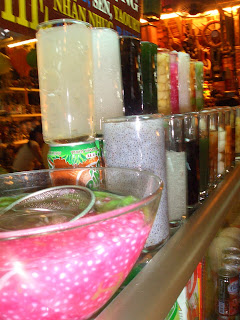So to be honest, I wasn't really that inspired. We didn't have any outstanding dishes to rave about unlike Vietnam and Thailand. I am wondering if that has anything to do with the fact that given the countries most recent devastating and traumatic historical events, namely generations wiped out by the Pol Pot regime, that, maybe some traditonal family recipes and methods of cooking are now lost forever. Travelling around, it was quite evident the majority of the population are under 20.
There are some interesting critters on Cambodian menus but we have both eaten our fair share of grubs and worms and insects on this journey and decided to give those a miss. We were keen to try the fried tarantulas, well Adam was, I was going to sit and watch amusingly but unfortunately, they were a little rarer than we thought and didn't come across any on our travels, not even live ones.
There is one particular dish that we enjoyed - Fish Amok - a mild and creamy coconut fish curry and I shall return at a later date with a recipe.
Sadly, our travels around South East Asia will be coming to an end soon. We have just a few weeks left and have decided to spend them on the most secluded island we could find. We have a bungalow waiting for us on a hill in the jungle overlooking a beach. There are no resorts there. Unfortunately that also means that we may not get the best internet connection. So this maybe the last entry for awhile.
But don't go away for too long, there is more to come. I have some amazing recipes to share that I have been collecting along the way but haven't had time to post. There is so much to explore in Australia in the food department and then of course there is the wine. See you soon.
Here are some more of Adam's beautiful photos of our journey to inspire your travels.























